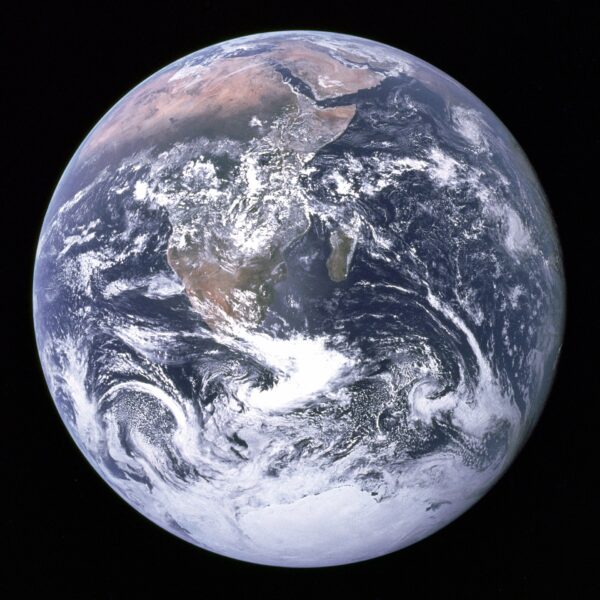It has been 50 years since a NASA mission captured a beautiful, iconic image of the Earth as a whole. The “Blue Marble,” as it is now famously known, is one of the most widely distributed images of the planet since it was taken in December of 1972. Since this historic achievement, we’ve seen a lot of changes in the world. Some were good changes, such as the development of technology and even of social media, which allowed us to communicate with family and friends no matter where they are in the globe. Other changes were more challenging and even disastrous, such as climate change.

Climate change has been at the center of many major international discussions for several years now, and why not? Nine of the 10 hottest years on record happened just in the past decade. The National Oceanic and Atmospheric Administration (NOAA), an agency under the United States government that monitors the climate among others, reported that the global land and ocean temperature last year (2021) was 1.04°C above the pre-industrial average. It is to be noted that the historic Paris Agreement has a goal of keeping global temperature increase below 2°C, with an aspirational goal of 1.5°C.
For our country, no matter how much we argue that we are not among the world’s major emitters of greenhouse gases (GHG), the fact still remains that we are one of the most vulnerable countries against the effects of climate change. We are threatened by extreme weather events, sea level rise, ocean acidification, and even extinction of species. We are heavily impacted. We are major burden bearers. Thus, it is important for our country’s leaders to make a firm stand in the talks on global climate action and to demand greater accountability from the world, especially from the top emitting countries and sectors.
According to the Emissions Gap Report 2022 of the United Nations Environment Programme, the top seven emitters are China, the EU27, India, Indonesia, Brazil, the Russian Federation, and the United States of America. Along with international transport, their total emissions already account for 55% of global GHG emissions in the year 2020. Highlighting the fact that there is a total of 195 countries in the world, their emissions are grossly excessive.
But all hope is not lost. Based on the Special Report from the Intergovernmental Panel on Climate Change (IPCC), scientists predict that the worse threats of climate change can be avoided if we cut carbon emissions in about half by 2030 and limit emissions within our planet’s absorbing capacity by 2050.
And this is where we ask: How exactly do we do that?
Is changing climate change an individual effort, an organizational endeavor, or a country-level undertaking? Can we really make an impact as individuals, or do we just let government do all the planning and execution?
The United Nations recommend limiting emissions per capita per year to 2 to 2.5 tons of CO2e by 2030. The Philippines already have a low emissions per capita at 1.27 tons of CO2e in 2021, compared to Qatar’s 35.59, UAE’s 21.79, or USA’s 14.86 tons of CO2e. A reported low emissions per capita, though, does not give us license to simply ignore steps to maintain or even further reduce our individual contributions to GHG emissions. While it certainly calls for specific countries to require climate action from its residents on the individual level, we should continue to adopt and support personal climate-friendly practices, including using less electricity at home, gradually shifting to a diet that is more plant-based over meat-based, and walking more or using a bike instead of a car when applicable.
On a community or organization level, such as in our neighborhoods, offices or campuses, we can push for a more faithful implementation of the reduce-reuse-recycle approach, organize regular tree-planting activities, and recommend installation of renewable energy or energy-efficient power sources. In the academe, we need to teach our young students even in their early years and actively involve them in climate efforts for them to develop a deeper understanding and passion for this global concern.
On a national level, we must demand from our government leaders a clear, science-based climate change adaptation and mitigation strategy. We need officials who can take the lead in discussing climate justice and climate finance for small and vulnerable countries such as ours in global talks. We need to get the support of other countries in building climate-resilient systems in different sectors, including energy, transportation, finance, technology, education, food security, and supply chain.
There are times when we are tempted to think that climate change and climate action are topics reserved only for our top national leaders or for more powerful countries. This mindset is dangerously wrong. With the growing frequency and intensity of extreme weather events, including typhoons and heavy flooding, droughts and wildfires, ocean warming, heat waves, sea level rise, and more, we see that climate hazards do not discriminate between the rich and the poor countries, between the ones with high GHG emissions and the ones with low GHG emissions, or between the prepared or not. In this global emergency that is climate change, everyone is affected – maybe some more than others, but definitely everyone is.
Fifty years ago, when scientist-astronauts on a NASA mission captured an image of the Earth as a whole, it drastically changed how we, as mankind, saw the world. We saw that we are all part of this one beautiful ‘Blue Marble’ and that we are all interconnected. So many things have changed since then, but one thing remains from what the iconic image has shown us – we are all in this together, and only in working together can we stand a chance in changing climate change.
 DavaoBase Online Home Base of Dabawenyos
DavaoBase Online Home Base of Dabawenyos 



